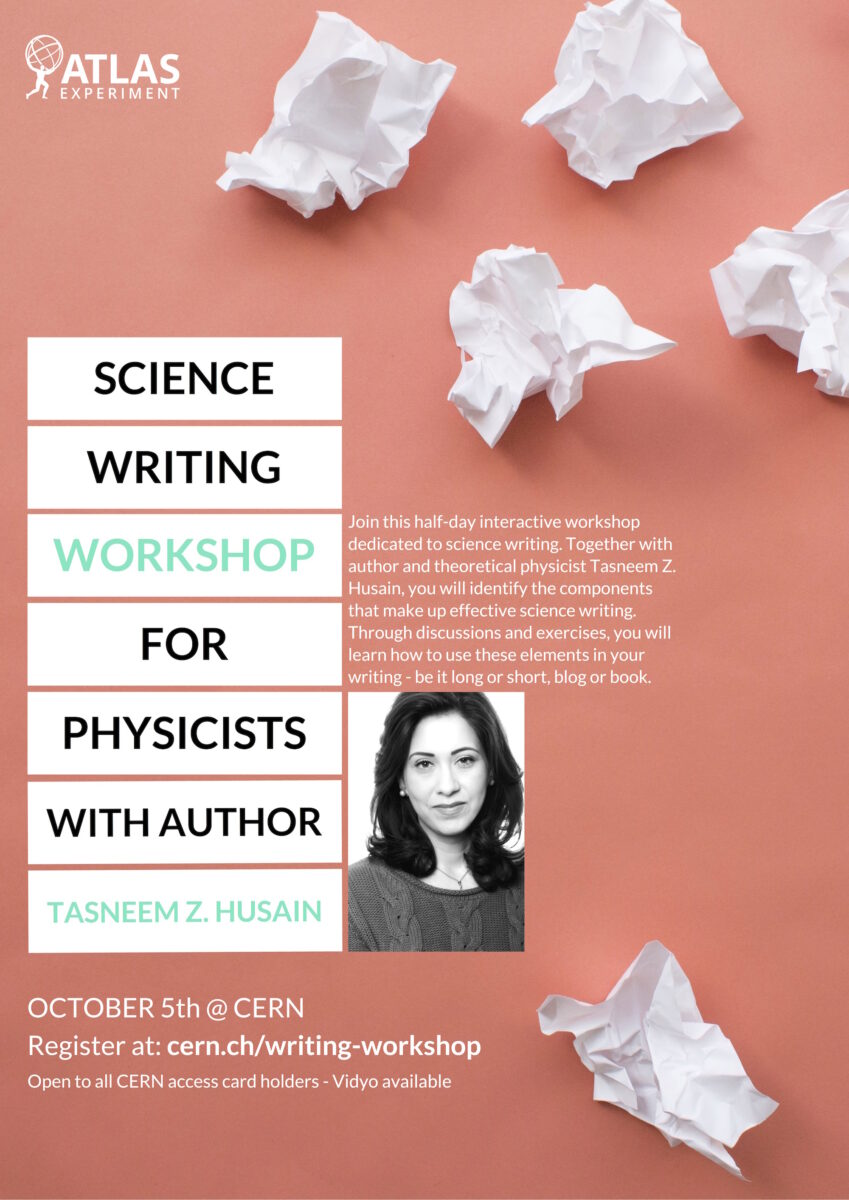
On 5th October took place the Science Writing Workshop, lead by Tasneem Zehra Husain and organized by Claire Adam Bourdarios, whom I met during the Induction Session, Isabel Trigger, and Katarina Anthony.
Workshop’s description:
***As particle physicists, we spend our days studying the elemental building blocks from which our entire vast and varied universe is constructed. We probe the individual particles, and examine the ways in which they interact with and influence each other. The knowledge we glean about these invisible subatomic constituents has deep implications for our understanding of familiar every day objects and phenomena.
In this workshop, we will take a similar approach to science writing. We will look closely at various passages, culled from a range of sources, and attempt to deconstruct them. We will try to identify the components that make up effective science writing, study them individually, and examine how they interact. Through discussions, and a series of exercises, we will learn how to use some of these elements to enliven our own writing – be it long or short, blog or book.***
See the event on the CERN website, with all the example’s documents
Some of my notes from Tasneem Zehra Husain, English mistakes are mine :
***
Facts are not science as the dictionary is not literature
The music can be understood by everybody… Score are difficult for the public to read. It is the interpretation, that is comprehensible. Should be the same for sciences.
Students love stories of processes, of failures also. If not, people think scientist are super heroes, they can solve equations and the mystery of world in a minute.
You need a voice. Story works because we feel involved. Communicate the struggles, the context, the human relationship to the world which is universal and timeless.
A metaphor always used is “think of the world as a trampoline”. The metaphor are never perfect, they able to catch the auditor, then we can enunciate the differences.
Examples of scientists’ blogs. It is a direct connexion with a human. Let it shine. Works better if the author’s personality is strong, if he have a sense of community. He can make some inside jokes for ex. To involve the readers. There is an interplay, not a frontier between life and science. This is science as it is lived (Janna Levin).
=> Brian Green’s project of book for children
***
After this presentation came the work for us. Tasneem asked us to list interests that are not in relation with physics, then 3 buzzwords linked to our field of interest (at CERN). The next step was to write a text that explain what we are doing, without using the buzzwords, but more words that come from the other fields of interest.
A good example of an explanation without the jargon that she showed us is a text from Roberto Trotta in The edge of the Sky.
What interested me most at the beginning was more writing a fiction based on the universe of physics, but opening this idea with the storytelling of scientists’ life also made me think.